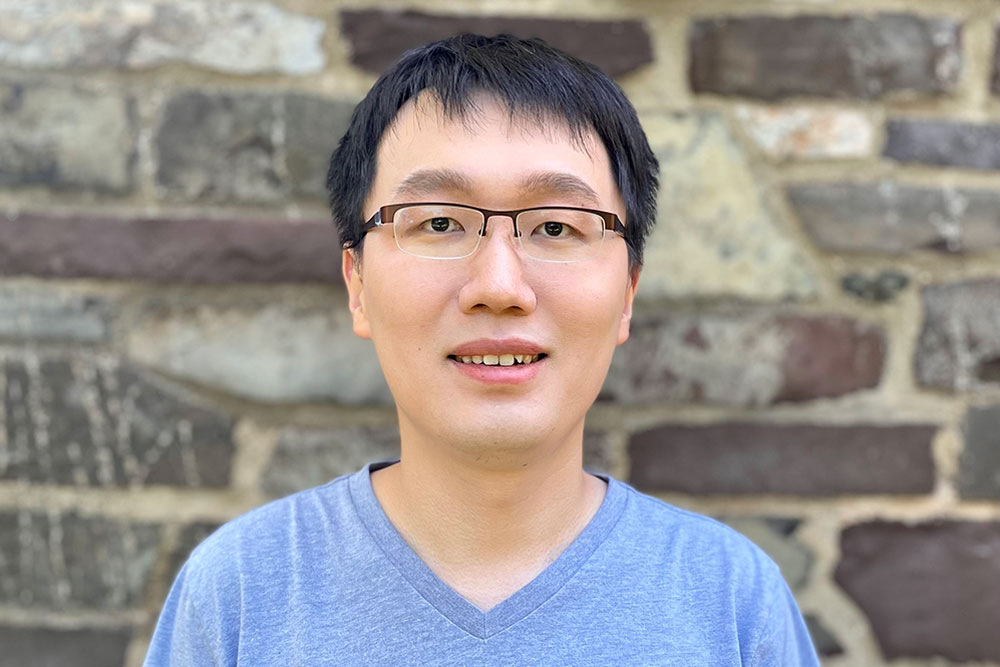2023 Del Favero Thesis Prize
Haowei Xu, PhD’23
Optical control over nuclear degrees of freedom
Tuesday, November 7, 2023. 3:00 – 4:30 PM
MIT 24-121
The Del Favero Thesis Prize, established in 2014 with a generous gift from alum James Del Favero (SM ’84), is awarded annually to a PhD graduate in NSE whose thesis is judged to have made the most innovative advance in our field.

BIO: Haowei Xu earned his PhD from the Department of Nuclear Science and Engineering at MIT in 2023, under the guidance of Professor Ju Li. He had previously received his B.S. degree in physics from the School of Physics at Peking University. His research focuses on light-matter interactions at the intersection of quantum materials and quantum engineering. He is committed to enhancing these interactions through innovative material design and to developing novel nonlinear optical effects. These advancements have potential applications in various fields, especially in quantum engineering.
ABSTRACT: The blossom of quantum information science and technology in the past decades is facilitated by the development of various qubit platforms. A qubit system that simultaneously has long coherence time, fast operation, and large scalability is highly desirable. Particularly, nuclear spins have been considered as ideal quantum information carriers thanks to their exceptionally long coherence time exceeding minutes and even hours at room temperature. However, the application of nuclear spins is hindered by their small energy scales and weak interactions with external fields.
Light-matter interaction has attracted intense interest in recent years. The development in both classical and quantum optics provide unprecedented opportunities in the applications of optical approaches. In condensed matter physics/materials science, optical approaches provide great flexibilities in characterizing material properties, driving excitations, and even triggering phase transitions in materials. Meanwhile, light-matter interactions are widely used in quantum science. For example, the spontaneous parametric down-conversion can be applied to create entangled photon pairs. If nuclear spins can be manipulated with optical approaches, then it would facilitate a number of potential applications.
However, an efficient interface between nuclear spins and optical approaches is still lacking and is in particular hindered by the formidable gap between nuclear spin frequencies (MHz ~ GHz) and optical frequencies (PHz). Previous works on optical control over nuclear spins rely on ancillary electron spins. In this thesis, we propose an opto-nuclear quadrupolar (ONQ) effect, whereby two-color optical photons can coherently couple with nuclear spins without the need for ancillary electron spins. Hence, several limitations due to the presence the electron spins, such as shortened nuclear spin coherence time, can be eased. Besides, the frequencies of the optical lasers can be arbitrary in practice, so they can be fine-tuned to minimize the material heating effect and to match telecom wavelengths for long-distance communications.
Following the introduction to the mechanism, we suggest several applications of the ONQ effect. We will focus on the applications in quantum technologies, including using nuclear spins as the quantum memory to store the quantum information carried by optical photons, as the quantum transducer between microwave/radio frequency and optical photons. We will also discuss how laser cooling of nuclear spin excitations can be realized via the ONQ effect.
RELATED
- 2020 and 2021 Del Favero Prize Lectures
- 2019 Del Favero Prize Lecture
- 2018 Del Favero Prize Lecture
- 2016 + 2017 Del Favero Prize Lectures
- 2015/6 Del Favero Lecture: Radiation physics today for materials science tomorrow
- 2014 Del Favero Lecture: The future of fusion power
October 2022
